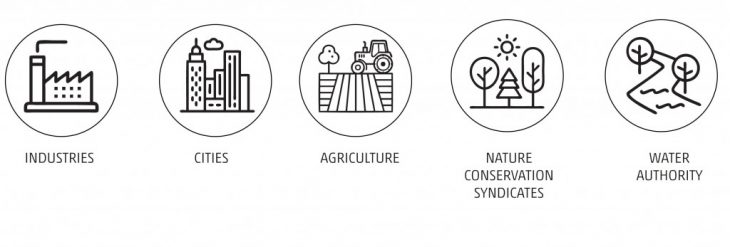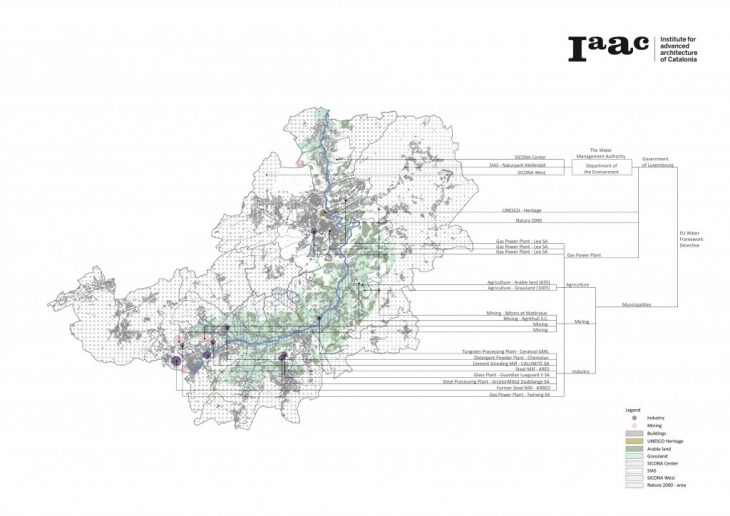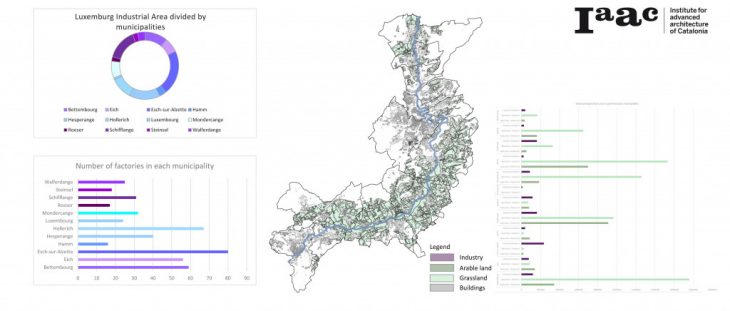The Stakeholders analysis is a part of renaturing project of the Alzette River in Luxembourg (made for the Internet of Cities Studio). The analysis of Stakeholders map were made for a part of a Alzette river. The focus is on a southern part of a river ( from the source, till Luxembourg City). The analysis are made in municipalities through which the river Alzette is flowing. In this part of the river are 12 municipalities (Esch-sur-Alzette, Mondercange, Bettembourg, Hamm, Roeser, Walferdange, Hollerich, Eich, Steinsel, Hesperange, Luxembourg and Schifflange) .
There is a big difference between them in terms of area taken by industry, agriculture and cities.

THE ALZETTE RIVER
The Alzette is a river with a length of 73 kilometres in France and Luxembourg. It is a right tributary of the Sauer. ALzette rises in Thil near the town Villerupt in the Meurthe-et-Moselle département, France, than crosses the border with Luxembourg. It flows through the Luxembourgish towns Esch-sur-Alzette, Luxembourg City and Mersch, and empties into the Sauer.

STAKEHOLDERS
Stakeholder mapping is a process of finding out the key stakeholders relating to a project. The process involves identifying all individuals who have an interest in the project outcome.
Understanding who the project stakeholders are is essential for a project success.
Stakeholder mapping is one effective way a project manager can better learn about the stakeholders.
For this project the main stakeholders are nature conservation syndicates (SICONA CENTER, SICONA WEST, SIAS), cities, agricultue, industry, water authority ( The Water Management Authority, Department of Environment), Unesco (Old Town Luxembourg – Heritage).

ANALYSIS
Most focus in analysis is on industry area and number in each of municipalities.
There is also a lot of agricultural area which is important in project of renaturing the Alzette River.
- Source of datasets: Generalitat de Catalunya
Stakeholders – Alzette River (Luxembourg) ,is a project of IAAC, Institute for Advanced Architecture of Catalonia developed at Master in City & Technology in 2020/21 by student: Marta Galdys, and faculty: Diego Pajarito.